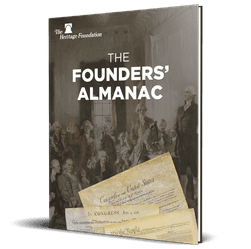Unbeknownst to me at the time, I was at the spearhead of a massive Hispanic immigrant wave that started to come to this country in the mid-1960s. Little did I know that this influx coincided with contemporary forces transforming the nation I was joining in unforeseen ways, which in time would curtail the upward mobility the immigrants sought. It all added up to a perfect storm.
The 1960s are known especially for two phenomena that altered society: President Johnson’s Great Society and the sexual and cultural revolutions. Proponents of the Great Society promised that this raft of social programs would help the poor gain access to the middle class, and those who gleefully promoted the Age of Aquarius said it would liberalize us from the shackles of our inhibitions. Ironically, the desertion of economic self-reliance and cultural mores tore up the family, the community, and society at large, shackling millions to something worse than our own self-discipline: poverty and government dependency.
There was another force at work. Less noticed but no less harmful was that one of the country’s key institutions, the once-sturdy and no-nonsense American schoolhouse, suddenly abdicated its historical assimilating responsibility and stopped instructing Americans on what constituted an upstanding, virtuous, and civic-minded citizenry.
But it wasn’t enough that the schools stopped teaching values. Almost immediately our politicians, policy makers, administrators, regulators, educators, and media moguls, and even in time our military leaders—everyone in charge of opinion making—started to erect roadblocks to assimilation without giving a thought to the fact that it is by agreeing to the norms of a community (that is, assimilation) that one can gain access to the social capital networks that have been so crucial to success in America.
In other words, they didn’t just stop teaching Hispanics how to assimilate into the American values of hard work, religiosity, honesty, and civic-mindedness that built this country but went further and started teaching that those values had created a racist society in which Hispanics, newly created as a minority and “a people of color” by the federal bureaucracy, needed protection in order to succeed. Assimilation over time became a dirty word and was officially jettisoned.
Assimilation had been what my former Heritage colleague Matthew Spalding, now a dean at Hillsdale college, calls “the long-standing resolution” of the seemingly irreconcilable conflict between the replenishing advantages of immigration and the potential dangers posed by large concentrations of foreigners. Absent that resolution, the conflict would fester.
Millions of Hispanic immigrants, then, suddenly arrived in a country that was casting off nearly all its norms. If this abandonment of age-old standards took a toll on the whole nation, it hit immigrants especially hard, as they had no memory of what the country had been like.
- Mr. Gonzalez is a Senior Fellow at The Heritage Foundation.
Originally appeared in Breitbart




